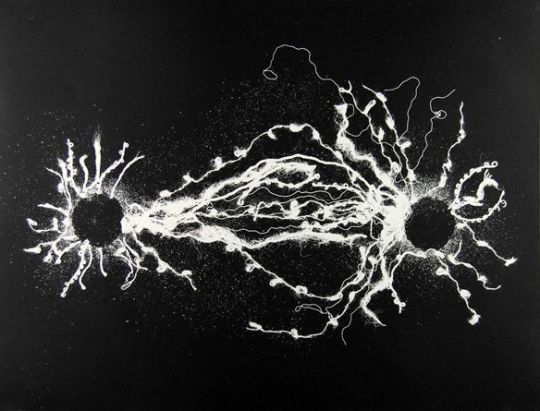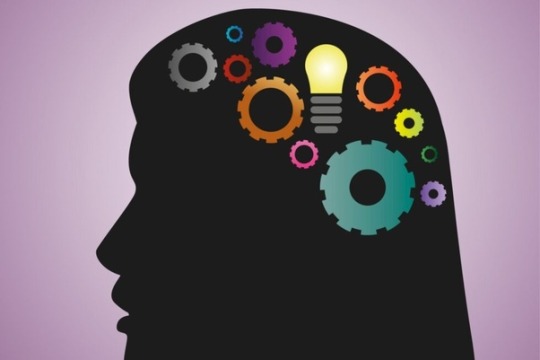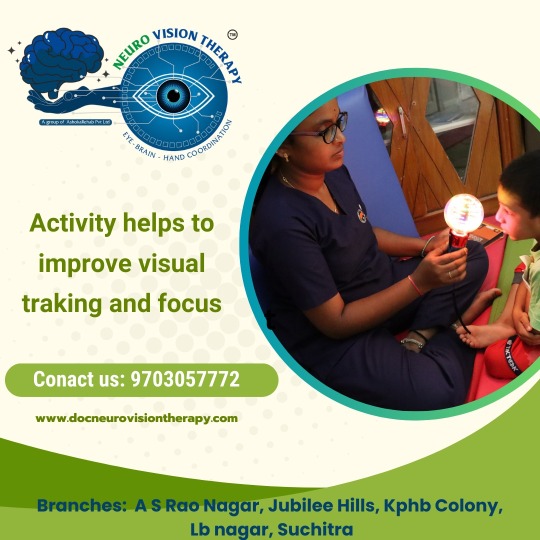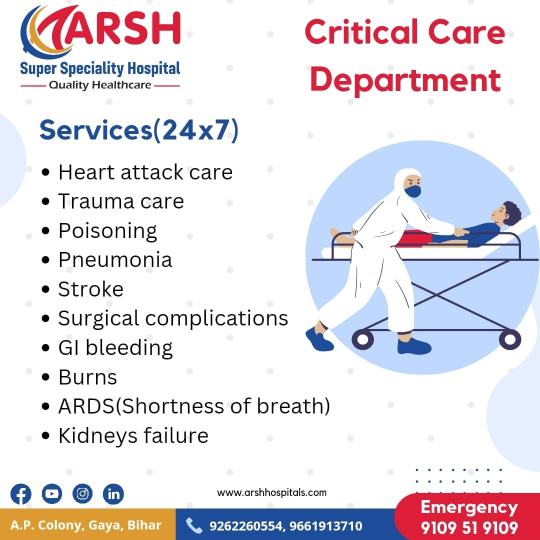#the neuros are converging
Explore tagged Tumblr posts
Text
Logically, I understand that the reason a lot of people with AD[H]D and ASD get along so swimmingly is because these diverging neuros in particular have a lot of characteristic crossover, but I think people are sleeping on how absolutely amazing it is to have an involved conversation with someone who needs to be dicking around on some app game to concentrate on what you're saying when you actively don't want them to initiate eye contact that you'll feel obligated to return. That shit right there, that's neuroconvergence.
1 note
·
View note
Text
I am not neuro divergent,I AM NEURO CONVERGENT, I AM YHE CULMINATION OF THE MINDS THOUSANDS OF ND PEOPLE INTO ONE SUPER ND!
#cobalt is losing his sanity#neuro divergent#neuro convergence#you could never match the sheer might of my autism!
2 notes
·
View notes
Note
thoughts on adhd diagonsis and the rising numbers of it? heard a couple different theories, including a school therapist saying that he thinks children are just getting misdiagnosed because they’re cutting recess times, but interested in your thoughts! lol
yea i talked about this a bit here but i would add for clarity:
this kind of narrative of 'rising rates of' [any dsm diagnosis, in this case adhd] is kind of misleading on the surface because these numbers, and cultural and medical attitudes toward these labels, vary widely. matthew smith gives a very abridged introduction to varying attitudes toward adhd globally, and points out that countries that have 'embraced' the adhd diagnosis and its corresponding drug treatments tend to be countries where pharma companies have pushed to expand their market for these drugs, and have been able to succeed in partnering up with local and regional medical guilds and practitioners' professional interests. which is to say that any 'rise' in 'adhd' should be interpreted with an eye to material factors, meaning, specifically, profit-seeking and broader patterns of imperialism and global market expansion.
none of this is to say that the impairments people experience in adhd are any less real, debilitating, or distressing. however, when we ask about those impairments becoming more widespread or severe, often the conversation becomes rapidly re-routed to cover only a narrative of individual cognitive or neurological 'failures' constituting a distinct 'disorder'. elided from this framing is the idea that an impairment of this sort arises not just from the individual's brain-mind-body, but from the extent to which that person is being accommodated by their social context, specifically demands for productivity, sustained attention, &c in the home / school / workplace.
the core research methodologies & data interpretation in the psy-sciences embed social valences into neuro-psychological investigations, heightening the perceived contrast between, eg, 'normal' and 'adhd' brains / neurotypes / &c. susan hawthorne points out that this is a powerful feedback loop: social values are embedded in the scientific investigations, the results of which are then of further social interest, and together social and scientific values tend to converge, mutually reinforce one another, and strengthen the ideas and data interpretations supporting the concept of a discrete, pharmacologically actionable, transhistorical and cross-societal brain disorder.
i truly cannot overstate the extent to which it matters that when ritalin arrived on the us market in 1955, psychiatric diagnosis of and pharmacological prescription for children's behaviours were in a very different state to how they are today. it is quite common (in psychiatry but also in other branches of medicine!) that diagnostic definitions and categories change, or even come into existence altogether, at the behest of pharmaceutical companies who need a diagnostic label in order to ensure insurance coverage for patients interested in taking their patented drugs. this combined with marketing direct to patients, and paid promotion to physicians, is a critical piece of the history of the adhd diagnosis.
because i always feel the need to make this crystal-clear: i do not oppose or object to people seeking or using stimulant medications lol. i <3 stimulants. that's not what this is about. i want you and me both to be able to use white-market amphetamines whenever we damn well please and you don't need to justify that on any moral or medical grounds. xx
146 notes
·
View notes
Text
1/? doodles of life series sci-fi au set in the same universe as my original comic, because when the neuros diverge… the hyperfixations converge

From left to right, top to bottom:
Cleo, BigB, Scar, Grian, Jimmy and Tango
Part 2, Part 3, Part 4
#ignore the outfits they’re rough drafts and Bad#except Jimmy because I’ve drawn him more than once or twice#art#no id#life series#life series au#zombiecleo#bigbstatz#goodtimeswithscar#grian#solidaritygaming#tangotek#puddle scifi au
85 notes
·
View notes
Text

BIRDCAGE ~Halcyon Prototype Module~ Demo is now live on Steam!
Defeat the RADON Daughters ANAXIBIA and THESIS, collect NEURO to unlock Database Entries and get acquainted with your ship -- the HALCYON.
59 notes
·
View notes
Text
— ꣼ 𝑡ℎ𝑒 𝑡𝑎𝑙𝑒𝑠 𝑜𝑓 𝑡ℎ𝑒 𝑏𝑙𝑎𝑐𝑘 𝑎𝑛𝑑 𝑤ℎ𝑖𝑡𝑒 𝑠𝑤𝑎𝑛.
chapter. 06. A new era.

Kaeleena was born a few minutes after her twin, Gaya, the records say. Both grew up as orphans in the all girls orphanage The Swans of Misericorde, in Buckinghamshire in the United Kingdom. The orphanage, bathed in religious beliefs, aimed to raise and shape girls, considering them promising of a bright future, calling them gifted, chosen ones. Once they have completed their educations, they are sent to power families in order for the hidden faces behind the orphanage to establish a web accross the world. Each country, each powerful family has a Swan. Gaya was sent to Seoul Korea in the Kang family, posing as the daughter of the Minister of Justice and future member of the government. As for Kaeleena, she stayed, separated from her Gaya and the other swans. Kaeleena was different, silent, observent, gilfted of an intellect above her sisters. This one... Never let her go. Would say their Mother Supreme, Libitina.

After graduation, Kaeleena is sent to Oxford to pursue her education in medicine. Excelling, she becomes a neuro surgeon, neuro specialist, reknown and admired. Her lectures and conferences are fought over to simply have the chance to attend, a conversation with her is highly praised. Brilliant, one of the erudit of her generations as many of her researches on the human brain as been inspiring for the neurosciences communitee. Her smile, her eloquence, the softness of her voice however hides the loss of humanity as day by day she goes furthur, succesfully developping what she calls The Rebirth, for human to transcend itself. As Libitina chooses Kaeleena as her successor as Mother Supreme, Kaeleena's day has come, to use the House of Misericorde to do better and embrace her dreams of Rebirth.

The world is evolving with new pathways opening up. The convergence of the human brain and technology is on the rise, blurring the lines between human and machine. transhumanism/ Kaeleena sees this as an opportunity and prioritizes the alliance between the House of Misericorde and Transhumanist Laboratories, place where are modified and enhanced human cognition and bodily function, expanding abilities and capacities beyond current biological constraints.. Renowned for her expertise, she frequently contributes to designing brain maps and performing brain surgery in case of damage for what they create in these laboratories : groundbreaking weapons.
#꣼ 𝑘𝑎𝑒𝑙𝑒𝑒𝑛𝑎 𝑛𝑎𝑟𝑎 𝑘𝑎𝑛𝑔. / the white swan.#꣼ 𝑘𝑎𝑒𝑙𝑒𝑒𝑛𝑎 𝑛𝑎𝑟𝑎 𝑘𝑎𝑛𝑔. / headcanons.#꣼ 𝑔𝑎𝑦𝑎𝑛𝑒 𝑠𝑎𝑒𝑟𝑎 𝑘𝑎𝑛𝑔. / headcanons.#꣼ 𝑔𝑎𝑦𝑎𝑛𝑒 𝑠𝑎𝑒𝑟𝑎 𝑘𝑎𝑛𝑔. / the black swan.#꣼ 𝑡ℎ𝑒 𝑡𝑎𝑙𝑒𝑠 𝑜𝑓 𝑡ℎ𝑒 𝑏𝑙𝑎𝑐𝑘 𝑎𝑛𝑑 𝑤ℎ𝑖𝑡𝑒 𝑠𝑤𝑎𝑛.
2 notes
·
View notes
Text
I've seen this discourse a few times and there's some truth to what the OP says, but also falls into something that I see a lot when lay people discuss hot button topics. The way this is phrased makes it seem like this is the end all be all of the research regarding the topic and that it was debunked and/or should be dismissed as pseudoscience. If this is not the OPs intent then that's misinterpreting their words. However, many people cite this type of post to dismiss any discussion of immaturity below the age of 25 and you will consistently see proclamations of "nuh uh, that was debunked!" Here's the problem. This isn't Wakefield's antivaxx for money studies. This is neuroscience that has continued to be researched. In fact, the study that is most likely being referenced in this post and from where we get the mid 20s maturation estimation is from the early days of this particular subject matter and was published in 2005. Read that again. 2005 is when The Adolescent Brain: A Work in Progress was published by Daniel Weinberger, Brita Elvegag, and Jay Giedd.
(Link: http://www.kvccdocs.com/KVCC/2018-Summer/PSY215/lessons/L-19/adol-brain.pdf) Do you think the research stopped? Do you think only these people did this type of research? Let's focus on Jay Giedd as he is the one who made the 25 years of age comment in various interviews. He is the one that pops up if you Google anything relating to this. Dr. Giedd is one of the primary researchers, authors, and experts on this subject matter and has continued his research since then. He is the one that has proposed that adulthood should be considered sometime in the mid 20s, that we see certain developmental milestones (maturations) around this time. He even references other papers around this time that supported the concept of immaturity in young adults under the age of 25 through other studies and means (Sowell et al., 2004 https://pubmed.ncbi.nlm.nih.gov/15385605/).
Philip Shaw et al., 2006. Intellectual ability and cortical development in children and adolescents. (https://local.psy.miami.edu/faculty/dmessinger/c_c/rsrcs/rdgs/emot/Shaw2006Nature.pdf)
-Jay Giedd is on this team
Philip Shaw et al., 2008. Neurodevelopmental Trajectories of the Human Cerebral Cortex. (https://www.jneurosci.org/content/jneuro/28/14/3586.full.pdf)
-This has Jay Giedd on the team
Henning Tiemeier et al., 2010. Cerebellum development during childhood and adolescence: a longitudinal morphometric MRI study. (https://www.ncbi.nlm.nih.gov/pmc/articles/PMC2775156/)
-More Jay Giedd
Armin Raznahan et al., 2011. Patterns of Coordinated Anatomical Change in Human Cortical Development: A Longitudinal Neuroimaging Study of Maturational Coupling. (https://www.cell.com/neuron/pdf/S0896-6273(11)00882-8.pdf)
-Jay Giedd is everywhere
Armin Raznahan et al., 2011. How Does Your Cortex Grow? (https://www.jneurosci.org/content/jneuro/31/19/7174.full.pdf)
-Jay Giedd could be in your house right now
Aaron Alexander-Bloch et al., 2013. The Convergence of Maturational Change and Structural Covariance in Human Cortical Networks. (https://www.tumblr.com/reblog/biglawbear/752594774072213504/zLSathAQ)
-Guess who is part of this one as well. All of these papers are looking at the structural development of the brain in adolescents and young adults. One of the issues that is brought up by OP is that the media ran with terminology and latched on to a certain number, thus building a mythos around it. The issue is that the word "maturation" is used throughout all of these studies. They are talking about the "maturation" of the PFC repeatedly. To the lay audience the term maturation means emotional and intellectual maturity, they think about it in regards to the behavior of children and teens vs adults. They're not thinking about it in terms of physical and physiological development, especially when it comes to neuro studies that may or may not have implications on emotional and intellectual development (maturity as the lay audience defines it). We know from these types of physiological studies that the mid 20s has a milestone where the physiological development of the PCF appears to reach its full volumetric potential in the biggest sense, and that more minor developments continue throughout life within this region and others. But does this really coincide with "maturity" as the lay audience would define it? Well other studies by other research groups do indicate that young adults do resemble teenagers in their way of thinking and approaching certain things. They have found that yes, in fact, young adults are still immature and that their way of behaving, thinking, and regulating does not "mature" until somewhere in the mid 20s. Alexandra Cohen et al., found that young adults aged 18-21 responded like young teenagers (13-14) when presented with continued negative stimuli compared to adults over the age of 21. There is noticeable shifts in cognitive control and capabilities, with emphasis increased emotional responses according to this study.(2016. https://escholarship.org/content/qt3z73902h/qt3z73902h_noSplash_c61ff86f7ba37a154bd56b940659b45a.pdf)
Laurence Steinberg et al., found that the behaviors associated with adolescence and immature self regulation decline as an individual gets older and begins to decrease dramatically and plateau between the ages of 23-26 (2018. https://www.ncbi.nlm.nih.gov/pmc/articles/PMC6473801/). Do these studies indicate that 25 is a magic number of maturity? Of course not. That number is once again due to Jay Giedd doing interviews, making statements, and the inability of non-experts to differentiate what "maturation" means in the context of the published developmental studies. This image encapsulates what happens with any science that goes mainstream

But the literature does indicate and support the claim that before a certain period of time in your mid 20s that you are immature. You still behave, act, think, and respond immaturely. This is not a bad thing, but it does indicate that your capacity to respond to certain things is just not the same as someone above a certain age threshold. So when you scream "I'm not a teenager anymore mom!" at age 20 at your parents, keep in mind that your brain and behaviors more closely resemble a young teen's than they do someone above 23. That's why you're constantly getting called immature under certain conditions, your brain is still reacting a certain way.
The whole "the brain isn't fully mature until age 25" bit is actually a fairly impressive bit of psuedoscience for how incredibly stupid the way it misinterprets the data it's based on is.
Okay, so: there's a part of the human brain called the "prefrontal cortex" which is, among other things, responsible for executive function and impulse control. Like most parts of the brain, it undergoes active "rewiring" over time (i.e., pruning unused neural connections and establishing new ones), and in the case of the prefrontal cortex in particular, this rewiring sharply accelerates during puberty.
Because the pace of rewiring in the prefrontal cortex is linked to specific developmental milestones, it was hypothesised that it would slow down and eventually stop in adulthood. However, the process can't be directly observed; the only way to tell how much neural rewiring is taking place in a particular part of the brain is to compare multiple brain scans of the same individual performed over a period of time.
Thus, something called a "longitudinal study" was commissioned: the same individuals would undergo regular brain scans over a period of mayn years, beginning in early childhood, so that their prefrontal development could accurately be tracked.
The longitudinal study was originally planned to follow its subjects up to age 21. However, when the predicted cessation of prefrontal rewiring was not observed by age 21, additional funding was obtained, and the study period was extended to age 25. The predicted cessation of prefrontal development wasn't observed by age 25, either, at which point the study was terminated.
When the mainstream press got hold of these results, the conclusion that prefrontal rewiring continues at least until age 25 was reported as prefrontal development finishing at age 25. Critically, this is the exact opposite of what the study actually concluded. The study was unable to identify a stopping point for prefrontal development because no such stopping point was observed for any subject during the study period. The only significance of the age 25 is that no subjects were tracked beyond this age because the study ran out of funding!
I gets me when people try to argue against the neuroscience-proves-everybody-under-25-is-a-child talking point by claiming that it's merely an average, or that prefrontal development doesn't tell the whole story. Like, no, it's not an average – it's just bullshit. There's no evidence that the cited phenomenon exists at all; if there is an age where prefrontal rewiring levels off and stops (and it's not clear that there is), we don't know what age that is; we merely know that it must be older than 25.
#neuroscience#scientific literacy#Continuing research#Ya'll need to stop relying upon singular studies and learn that science is a collaborative continual effort of research#Learn to read papers and read the papers that they cite
27K notes
·
View notes
Text
Understanding Human Thinking Styles

Understanding how humans think is important to create better tools, education systems, and problem solving solutions that best fit the human experience. Although I think it is important to note the style differences even between specific humans. I want to take some time here to discuss the difference between convergent thinking and divergent thinking – while highlighting the different experiences people have with these types of thinking. These modes of thinking are often discussed in the context of creativity and problem-solving, but they represent fundamentally different cognitive processes that play distinct roles in how we approach problems and generate ideas.
Convergent Thinking: Focused and Analytical
Convergent thinking is a type of thinking that focuses on bringing together information, ideas, or solutions in a structured, logical, and systematic way. The goal of convergent thinking is to identify the single best solution to a problem. It is associated with the ability to narrow down multiple possibilities and focus on one correct or optimal answer. Key terms here would be single best solution, narrowing down information, and focusing on one correct route. In other words, they converge on one solution.
This process is highly analytical and often involves deductive reasoning, similar to “top down processing”. For example, when solving a math problem, a person applies known formulas and steps to arrive at a precise, correct answer. Similarly, convergent thinking is used in situations that require accuracy and precision, such as answering multiple-choice questions or following a set procedure in a scientific experiment. Convergent thinking is often linked to intelligence tests, standardized exams, and technical problem-solving because it requires individuals to apply their knowledge to solve clearly defined problems.
Divergent Thinking: Creative and Open-Ended
Divergent thinking, on the other hand, is a more open-ended and expansive process. It involves generating a wide variety of ideas or solutions in response to a question or problem. Unlike convergent thinking, which seeks a single correct answer, divergent thinking encourages the exploration of multiple possibilities and alternatives. It is closely associated with creativity and innovation, as it allows individuals to think beyond traditional boundaries and come up with novel and unique solutions. Key terms here would be generating multiple possibilities and expanding ideas.
In the creative process, divergent thinking is often seen as essential for generating new ideas and exploring possibilities. It is used in brainstorming sessions, artistic endeavors, and situations where innovative solutions are needed. Divergent thinking is not concerned with finding a single right answer, but with generating a diverse set of ideas that can later be refined, combined, or tested.
How this differs between people
By this point of time, I am sure you have heard the term “neuro-divergent” in social media, often referring to people with ADHD. People who present with a form of ADHD are known to access divergent thinking styles easier than convergent thinking styles. Although, I want to discuss the diversity of human thinking styles outside of labels.
Imagine you have two gas tanks inside of your head. One for convergent thinking and one for divergent thinking. Just like anything else on our body, no two things are identical. Some people have one slightly larger tank, whereas other people have one tank that is significantly larger– and that is okay. You just need to know which one is larger so you can keep that in mind when you are buying… shoes.
Similar with thinking styles, you need to know which gas tank is larger for you to better understand your emotions and behavior. If you struggle to complete routine tasks with minimal problem solving or creative thinking (dishes, laundry, cleaning) then that’s a sign that your convergent tank is smaller. Or if you feel like you need routine and quiet to stay emotionally regulated then perhaps your convergent tank is larger. Again, the point here is not to over pathologize our differences, the point is to help tailor your life to best your shape. If you feel like your convergent tank is small, then try pairing convergent tasking with divergent tasks – clean with an interesting podcast on that makes you think. Or if your convergent tank is significantly larger, then it may be a good idea to seek out routine to create the foundation of your life with smaller episodes of spontaneity.
What to do?
If you feel like this blog speaks to something you struggle to balance, then reach out! Try searching for a therapist that works with “neuro divergence”, “ADHD”, or “ASD”. Often times those practitioners sought out specific training to learn more about how thinking styles affect behavioral and emotional responses.
Contact us.
0 notes
Text
Vision therapy and ADHD
Children experiencing vision difficulties may exhibit signs such as poor attention, limited self-control or hyperactivity. While these symptoms often lead to a diagnosis of ADHD, it’s crucial to consider that vision conditions could be the underlying cause of these behavioral challenges. Unfortunately, traditional vision screenings typically overlook the tests necessary to diagnose vision-related learning issues.
Vision therapy and ADHD can be interconnected in some children, especially those with both attention and visual processing challenges. Children with ADHD may experience difficulties with eye tracking, convergence insufficiency, or visual-motor integration, which can worsen symptoms like inattention, distractibility, and difficulty with tasks such as reading or focusing.
These visual issues can exacerbate symptoms of inattention and distractibility, commonly seen in ADHD, especially during tasks like reading or focusing on nearby objects. Vision therapy involves a series of exercises aimed at improving eye coordination, focus, and eye movement control, which may help children improve attention and reduce frustration in these areas.
Some children with ADHD also have vision problems that can contribute to their symptoms
Difficulty maintaining attention and focus.
Sluggish task completion
Challenges in reading comprehension
Mathematical difficulties
Subpar handwriting
Skipping lines during reading
Reversing letters or numbers
Eyestrain
Frequent headaches
Double vision
Closing one eye while reading

Vision therapy is sometimes used to treat visual issues in children with ADHD. Here are some potential benefits:
Improved Attention: Addressing vision problems might lead to better focus and attention, especially for tasks that require reading or sustained visual attention.
Enhanced Eye Tracking and Coordination: Vision therapy exercises can help children with ADHD improve their ability to track moving objects and coordinate their eye movements, which might reduce frustration during reading or other activities.
Reduced Visual Discomfort: For children with convergence insufficiency or eye strain, vision therapy can help correct the misalignment, reducing symptoms like headaches, blurry vision, or fatigue, which might otherwise interfere with learning and focus.
Better Visual-Motor Skills: Vision therapy can help improve the integration of vision and motor control, benefiting activities such as handwriting or sports that require hand-eye coordination.
At Ashoka Neuro Vision Therapy, we specialize in diagnosing and treating various neuro vision issues, providing personalized care to help individuals overcome this condition and achieve optimal vision health. Our experienced team of ophthalmologists utilizes advanced diagnostic tools and innovative treatment techniques to address vision issues effectively.
Comprehensive Evaluation: Our experts conduct thorough eye examinations to assess the extent of the problem and its impact on vision. We utilize specialized tests to determine the underlying causes and tailor treatment plans accordingly.
Customized Treatment Plans: Based on the individual’s age, severity and associated vision problems, we design personalized treatment strategies. These may include corrective lenses, eye exercises aimed at realigning the eyes.
Post-operative Care and Rehabilitation: Following interventions, our team provides comprehensive postoperative care and guidance to facilitate optimal recovery and rehabilitation. We work closely with patients to monitor progress and address any concerns throughout the treatment process.
Conclusion
For children with ADHD who also experience visual difficulties, vision therapy can be a helpful tool in improving eye function and reducing visual discomfort, which may, in turn, help with attention and focus. However, it should be viewed as part of a comprehensive approach to managing ADHD and not a replacement for other ADHD treatments. Always consult with professionals who specialize in both ADHD and vision disorders to determine the best course of action.
0 notes
Text
Neuro-Linguistics as Ammo
# The Evolution of Cognitive Influence: From NLP to Digital WarfareThe modern era of cognitive influence represents a convergence of psychological insight, technological tools, and cultural manipulation techniques. From the development of Neuro-Linguistic Programming (NLP) to the weaponization of memes in Fifth-Generation Warfare (5GW), the ability to shape perception, behavior, and cultural…
0 notes
Note
hi i saw your reblog and i love yapping about this so 😭. it’s my interpretation that while it’s technically the same species, a few key differences occurred during evolution. they think that the estrus cycle was evolved out in primates around 50 million years ago but what if in this fictional world, it was just made dormant instead. so the menstrual cycle evolves but we never lose the estrus gene.
the same hormone that is responsible for ovulation in humans is responsible for heats in animals- luteinizing hormone (LH). LH is made in the hypothalamus. so perhaps when we evolved away from apes, as the hypothalamus changed so did our luteinizing hormone, and as LH changed, hypothetically the estrus cycle gene was reactivated only now it’s become a mutation of the gene associated with menstruation.
this is fake and made up but also who is to say this isn’t possible in a universe different from ours.
hiiii!! I am starting my master's on the neuro-endocrine system so this is very fascinating to me :D
This is a very interesting idea because that would mean that the mutation happens spontaneously? if yes, and I don't want to shake your idea, but how is the mutation kept and passed onto enough offspring to affect enough of society to be considered omega *verse*? I am not an evolution specialist but from my understanding the mutation would need to occur multiple times in different individuals (what I'm not sure if we have any examples of ever happening?) and then they would need to breed together to pass it one and preserve it. so do you think that would be possible by the omegas being extremely fertile (the heat can happen more often than in menstrual cycle after all) and being able to produce many more offspring, and that because of probably the scents (how would that evolve btw 👀) they are much more prone to crossing with other individuals with the same mutation. and that way we could probably get enough mutation in the population to reach convergence :D
and obviously the disclaimer that this is not real, we don't think omega verse or estrus cycle is possible in humans.
#i hope you don't mind me digging into your idea... if you want to yap more I'm very interested :D#also what about the ruts? i have no idea how they even work...#doggie answers#bambi <3
0 notes
Text
the reality of hypersexuality is that the brain scans itself for the most sensitive, trauna infused part of oneself and prods at it. it finds the deepest menal flesh wound in your psyche and rewards you for clawing it open over and over with an incredible neuro cocainesque chemical rush until you feel physically sick, it continues that rhythm of apoptosis until the gored open wound is grey like spoiled meat and maggot infested . the rush is dull and dim but your body struggles for any lingering drop of rainbow parfait syrup as you read detailed stories of others with similar situations but worse , who have graduates from the self harm or fantasy and broke the glass pane of the mine plane , converging their sickness into reality as they set out to rip themself apart until the body is inside out , to create more vile wounds of violent rape to create more springs of brain brewed substances . people who have culled every nerve and spooned their conscious from out the ear so that the pain from their wounds no longer burdens themー simply so they can set out to destroy their body further without lingering regret . in short , the defection stemming from the mechanical organ (brain)s mechanism of coping from a past rape(s) plunges them into more rape
in order to suppress the trauma hemorrhage of being raped your brain creates the defection ; a carnal desire of violation out of a desperate plea of survival . the idea is to turn pus filled memories into druglike ecstasy , but the brain does not have a concept of what is immoderate . it spills out everywhere impartially and without concern . the inhumanistic neurotransmitters compute rape as something that makes happy while the humanistic concious remains tortured
0 notes
Text
I’m going to converge your neuro
I’m going to de-aww your tism
#imagine getting your gimmick stolen#because this is a threat blog#sometimes i forget that threat blogs make threats lol
427 notes
·
View notes
Text
Boosting AI Trustworthiness in Financial Services

As a cognitive scientist with decades of immersion in various AI technologies, including speech and natural language understanding, machine-based learning, and rule-based decision-making, I’ve seen the ebbs and flows of AI development. Amidst this journey, the advent of ChatGPT and other generative AI large language models (LLMs) marks a pivotal advancement in AI’s capabilities, merging various AI methodologies into a cohesive system that leverages their strengths and mitigates weaknesses.
This integration—encompassing machine learning (statistical AI), neural networks (neuro AI), symbolic logic (symbolic AI), and generative AI (LLMs)—enables the creation of complex problem-solving systems that are not only efficient in learning with limited data but also expand AI’s utility across diverse tasks. Crucially, this blend ensures decisions are both interpretable and explainable, essential for advancing AI.
For the financial sector, the convergence of these AI technologies holds particular promise for enhancing the transparency and trustworthiness of AI-driven decisions. Transparent, explainable AI systems allow financial institutions to gain confidence in AI-generated insights, laying the groundwork for more reliable and comprehensible AI applications in finance.
The Significance of Knowledge Graphs in Finance
Knowledge Graphs, crucial to Neuro-Symbolic AI, have evolved through generations, from rule-based logic systems known for consistency yet challenged by complexity, to incorporating machine learning and graph neural networks capable of revealing patterns but often opaque and biased. The latest generation, with LLMs and Retrieval-Augmented Generation, revolutionizes inference-making within graphs, simplifying ontology creation and rule formulation. However, it also introduces challenges, especially skepticism towards LLM inference reliability, necessitating rigorous verification.
Read More: Turning to AI to Address Financial Crime, Regulatory Compliance
Financial Use Cases: Enhancing Knowledge Graphs and Machine Learning with LLMs
In the financial industry, LLMs play a crucial role in building, curating, and querying Knowledge Graphs, essential for organizing vast amounts of financial data, regulatory requirements, and customer information. They assist in creating taxonomies and ETL processes, curating data to ensure accuracy, and generating new symbolic logic rules, for instance, for risk assessment models or compliance guidelines.
Furthermore, LLMs bridge the gap between the predictive accuracy of machine learning applications, like customer behavior prediction or fraud detection, and the need for explainable insights. By analyzing extensive financial databases and literature, LLMs provide detailed rationales for predictions, supporting decision-making processes and regulatory compliance efforts. They also facilitate the generation of feature vectors and the development of machine learning models, potentially automating aspects of financial analysis and risk management.
Preventing LLM “Hallucinations” in Financial Analysis
In the financial domain, inaccuracies or “hallucinations” in AI-generated content can lead to significant repercussions. Knowledge Graphs can address this by interacting directly with LLMs for data validation and verification, ensuring the reliability of financial predictions, market analyses, or investment recommendations. For example, cross-verifying LLM-generated financial data against trusted databases or using real-time market data to confirm the accuracy of LLM outputs minimizes risks and enhances trust in AI-driven financial services.
Neuro-Symbolic AI’s Role in Advancing Trustworthy Financial AI Applications
The integration of diverse AI technologies into a Neuro-Symbolic AI framework represents a transformative approach to overcoming the limitations of individual AI methods, introducing a level of interpretability and reliability crucial for financial services. This collaborative AI model paves the way for advanced, trustworthy AI applications in finance, aligning technical sophistication with the nuanced demands of financial decision-making and regulatory compliance.
In conclusion, the amalgamation of AI technologies under the Neuro-Symbolic AI umbrella offers the financial sector an unprecedented opportunity to enhance the accuracy, transparency, and trustworthiness of AI-driven services, thereby reshaping the future of financial technology and services.
0 notes
Text
Best Neurosurgery Hospital in Gaya Bihar — Arsh Hospital
In the realm of Neurosurgery, where precision, expertise, and cutting-edge technology converge, Arsh Hospital stands tall as a beacon of hope and healing in Gaya, Bihar. Renowned for its unwavering commitment to excellence, Arsh Hospital has emerged as the premier destination for neurosurgical care in the region, offering patients access to world-class treatment close to home.
About Arsh Hospital:
Nestled in the heart of Gaya, Bihar, Arsh Hospital is a state-of-the-art healthcare facility dedicated to providing comprehensive neurosurgical care of the highest standard. With a multidisciplinary team of neurosurgeons, neurologists, and support staff, the hospital boasts modern infrastructure, advanced medical technology, and a patient-centric approach that sets it apart as a leader in the field.
The hospital’s neurosurgery department is led by a cadre of highly skilled and experienced neurosurgeons who are at the forefront of their field. Their collective expertise encompasses the full spectrum of neurosurgical conditions, from intricate brain surgeries to complex spinal procedures, ensuring that patients receive the most advanced and personalized care possible.
Services Offered:
Arsh Hospital offers a comprehensive range of neurosurgical services to address various neurological disorders and conditions. Some of the key services include:
Brain Tumor Surgery:
The hospital specializes in the surgical management of brain tumors, employing state-of-the-art techniques such as microsurgery and neuro-navigation for optimal tumor removal while preserving neurological function.
Spinal Surgery:
Arsh Hospital provides advanced spinal surgery options for conditions such as herniated discs, spinal stenosis, spinal deformities, and spinal cord injuries, utilizing minimally invasive techniques whenever possible to minimize patient discomfort and recovery time.
Neurovascular Surgery:
The hospital is equipped to perform intricate neurovascular surgeries, including aneurysm clipping, arteriovenous malformation (AVM) surgery, and carotid endarterectomy, with the utmost precision and care.
Neurotrauma Care:
Arsh Hospital offers comprehensive care for patients with traumatic brain injuries and spinal cord injuries, providing timely intervention and rehabilitation services to optimize outcomes.
Functional Neurosurgery:
The hospital specializes in functional neurosurgical procedures such as deep brain stimulation (DBS) for movement disorders, epilepsy surgery, and pain management interventions for conditions like trigeminal neuralgia.
Patient-Centric Approach:
At Arsh Hospital, patient well-being and satisfaction are paramount. The hospital’s patient-centric approach is reflected in every aspect of care delivery, from the warm and compassionate demeanor of the staff to the emphasis on clear communication and shared decision-making with patients and their families.
Patients at Arsh Hospital are treated as active participants in their own care, with ample opportunities for education, discussion, and involvement in treatment planning. The hospital’s dedicated team of neurosurgeons and support staff ensures that patients feel informed, empowered, and supported throughout their treatment journey.
Why Choose Arsh Hospital?
Arsh Hospital boasts a team of highly skilled and experienced neurosurgeons who are leaders in their field, ensuring the highest quality of care and outcomes for patients.
Advanced Technology:
The hospital is equipped with state-of-the-art neurosurgical technology, including intraoperative neuro-navigation systems, neuro-monitoring tools, and advanced imaging modalities, enabling precise diagnosis and treatment.
Compassionate Care:
Patients at Arsh Hospital receive compassionate, personalized care from a dedicated team of healthcare professionals who prioritize their comfort, safety, and well-being.
Accessibility:
Located in Gaya, Bihar, Arsh Hospital provides accessible and affordable neurosurgical care to patients from across the region, eliminating the need for travel to distant cities for treatment.
Conclusion:
Arsh Hospital stands as a shining example of excellence in neurosurgical care in Gaya, Bihar, and beyond. With its commitment to innovation, expertise, and patient-centered care, the hospital continues to transform lives and inspire hope for those in need of neurosurgical treatment. If you’re seeking world-class neurosurgery close to home, look no further than Arsh Hospital for exceptional care and outcomes.

Arsh Hospital
0 notes
Text
Why Dr. Vanchilingam Hospital Thanjavur is Your Best Choice for Neurological Care?
When it comes to neurological care, choosing the right hospital is crucial. Dr. Vanchilingam Hospital in Thanjavur stands out as the premier destination for comprehensive neurological services, providing exceptional care with a patient-centered approach.
Dr. Vanchilingam Hospital is renowned for its team of highly skilled and experienced neurologists, led by the esteemed Dr. Somesh Vanchilingam. With a legacy that dates back to 1996, the hospital has consistently delivered top-notch medical care, earning the trust of patients from all over Tamil Nadu and beyond. The expertise of the medical staff ensures that each patient receives personalized and effective treatment for a wide range of neurological conditions.
One of the key strengths of Dr. Vanchilingam Hospital is its state-of-the-art facilities. Equipped with the latest diagnostic and treatment technologies, the hospital offers advanced services such as MRI, EEG, and neuro-rehabilitation. The dedicated brain tumor unit, Hyper-acute Stroke Unit (HASU), and acute brain injury unit are testaments to the hospital's commitment to specialized neurological care.
Furthermore, patient care at Dr. Vanchilingam Hospital goes beyond medical treatment. The compassionate and professional staff provide holistic support, addressing the emotional and psychological needs of patients and their families. This comprehensive approach ensures that every aspect of a patient’s well-being is considered.
Choose Dr. Vanchilingam Hospital in Thanjavur for unparalleled neurological care, where expertise, technology, and compassion converge to provide the best possible outcomes for patients.
0 notes